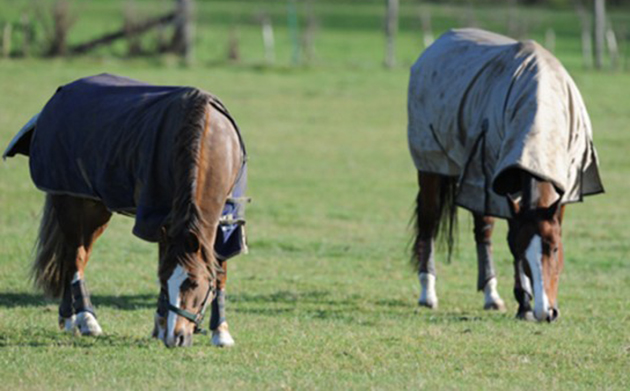While horses are obviously herd animals and living out with other horses satisfies a number of their emotional needs, many owners are now bucking this ideal and opting to turn their horses out alone.
For some owners, including a number of top riders, the risks and complexities associated with turning multiple horses out in the same paddock are proving just too great.
Less risk of injury
“At the moment all of my competition horses have individual turnout,” says Paralympic gold medallist dressage rider Sophie Wells.
“I had a bad accident in the past with one horse kicking another and felt it wasn’t worth the risk. They are all next to each other, even the stallion, so they can still socialise and are given the opportunity to groom each other in controlled safe situations as I still feel social interaction is important.”
Event rider Georgie Spence agrees: “I know horses are designed to go in herds, but sadly they are too valuable now and also the cost of vets fees or time off work or out of competition is too high.”
Less risk of injury is not the only reason people are preferring solo grazing, particularly at livery yards. It makes pasture management, feeding times and taking your horse in and out of the field much more straightforward. Arguments over whose turn it is to poo-pick the field or pull-up the ragwort are eliminated and there’s more chance that your horse’s rug will come back free from rips and tears.
The BHS’s view
However, the British Horse Society’s (BHS) official advice remains for horses to be turned out together where possible, although they recognise that there are a number of factors that can influence your decision.
“Horses are herd animals and therefore prefer to live together in a social group, which provides many advantages for them such as company, feeling of protection and mutual grooming,” says BHS welfare education officer Emmeline Hannelly.
“If choosing individual turnout be aware that a principle element of companionship has been removed for these horses and additional care may need to be provided.”
Continued below…

8 thoughts of a hardy turned out horse

Subscribe to Horse & Hound this spring for great savings
Eventer and showjumper Emily Llewellyn makes the decision on whether her horses go out alone or in company on their individual temperaments.
“If they are boisterous and bolshy then we will put them out on their own, but if they are kind and gentle we will put them out in pairs,” explains Emily. “Some like interacting and playing and that’s great because then I can put them out together and they can switch off and be horses. My top horse Emirati Nightsky went out all last year with shoes on with another horse and it really helped him to chill out.”
Temperament is one way to separate horses in a group environment, while other methods include by sex, age or workload.
“It’s especially important for the younger ones to be out in groups so they have the social interaction,” says international showjumper Yazmin Pinchen. “We turn our broodmares and youngstock out together in groups of three, that way if we have to take one away then there are always two left together. For competition horses we prefer individual small turnout paddocks to protect against injury.”
Whatever your preference or circumstances regarding turnout, it is important to look at your horse as an individual and make the decision based on what is right — and works — for them.
Horse & Hound magazine, out every Thursday, is packed with all the latest news and reports, as well as interviews, specials, nostalgia, vet and training advice. Find how you can enjoy the magazine delivered to your door every week, plus options to upgrade to access our H&H Plus online service which brings you breaking news as it happens as well as other benefits.





